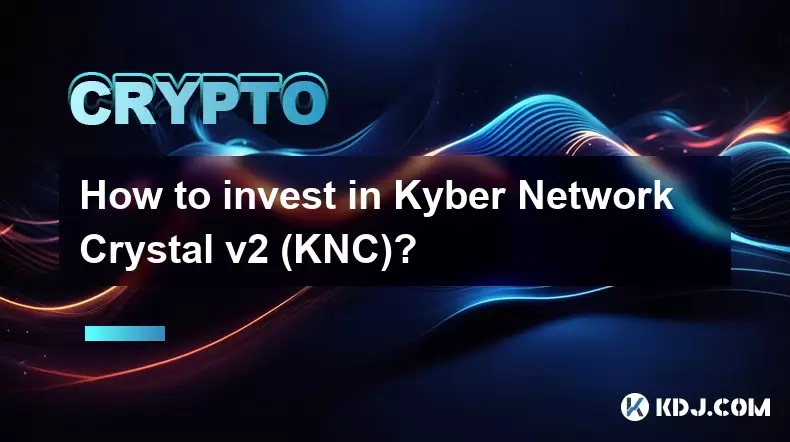-
 Bitcoin
Bitcoin $117700
-1.00% -
 Ethereum
Ethereum $4458
-3.91% -
 XRP
XRP $3.119
0.14% -
 Tether USDt
Tether USDt $1.001
-0.02% -
 BNB
BNB $836.6
-1.56% -
 Solana
Solana $189.5
-3.90% -
 USDC
USDC $0.9998
-0.02% -
 Dogecoin
Dogecoin $0.2335
1.29% -
 Cardano
Cardano $0.9642
1.51% -
 TRON
TRON $0.3539
-1.19% -
 Hyperliquid
Hyperliquid $47.41
-1.84% -
 Chainlink
Chainlink $21.92
-3.28% -
 Stellar
Stellar $0.4286
-0.23% -
 Sui
Sui $3.724
-3.29% -
 Bitcoin Cash
Bitcoin Cash $594.8
-0.78% -
 Ethena USDe
Ethena USDe $1.001
0.04% -
 Hedera
Hedera $0.2501
-2.06% -
 Avalanche
Avalanche $23.96
-4.87% -
 Litecoin
Litecoin $119.0
-2.32% -
 Toncoin
Toncoin $3.473
0.82% -
 UNUS SED LEO
UNUS SED LEO $9.596
0.17% -
 Shiba Inu
Shiba Inu $0.00001301
-0.39% -
 Uniswap
Uniswap $11.03
-0.25% -
 Polkadot
Polkadot $3.935
-2.62% -
 Dai
Dai $1.000
0.01% -
 Bitget Token
Bitget Token $4.564
-1.76% -
 Cronos
Cronos $0.1512
-4.11% -
 Ethena
Ethena $0.7306
-1.09% -
 Pepe
Pepe $0.00001087
-2.68% -
 Aave
Aave $300.2
-4.00%
Learn what Litentry LIT coin is in one minute
Litentry's decentralized identity aggregation protocol bridges Web2 and Web3, offering cross-chain ID aggregation, KYC compliance, improved privacy, and a unified identity solution for blockchain users.
Dec 31, 2024 at 01:27 pm

Key Points:
- What is Litentry LIT Coin?
- How Does Litentry Work?
- Key Features and Benefits of Litentry
- The Litentry Token (LIT)
- Litentry Community and Ecosystem
- Investment Considerations for Litentry
- FAQs Relating to Litentry
1. What is Litentry LIT Coin?
Litentry LIT coin is the native utility token of the Litentry network, a decentralized identity aggregation protocol designed to bridge the gap between Web2 and Web3. Litentry provides a unified identity solution that allows users to manage their digital identities across different blockchains and applications.
2. How Does Litentry Work?
Litentry leverages a decentralized network of verifier nodes to attest and aggregate user identities. Users can create profiles on Litentry and link their different identities, such as their social media accounts, email addresses, and blockchain addresses. Verifier nodes then verify the authenticity of these identities and issue digital certificates that serve as proof of identity.
3. Key Features and Benefits of Litentry
- Cross-chain ID Aggregation: Litentry allows users to aggregate their identities across multiple blockchains, providing a single point of access to their digital identities.
- KYC and AML Compliance: Litentry facilitates compliance with KYC (Know Your Customer) and AML (Anti-Money Laundering) regulations by enabling businesses to verify user identities in a secure and efficient manner.
- Improved Privacy: Litentry utilizes privacy-preserving technologies to protect user data and prevent identity theft.
- Scalable and Decentralized: The Litentry network is built on a scalable distributed ledger, ensuring high transaction throughput and data security.
4. The Litentry Token (LIT)
The LIT token has the following use cases within the Litentry ecosystem:
- Transaction Fees: LIT is used to pay transaction fees for identity verification and related services on the Litentry network.
- Staking and Governance: LIT holders can stake their tokens to participate in network governance and earn rewards.
5. Litentry Community and Ecosystem
Litentry has fostered a vibrant community that includes developers, users, and partners. The team actively engages with the community through social media, community calls, and development initiatives. Litentry has also partnered with various projects in the blockchain industry, including Polkadot, Ethereum, and Polygon.
6. Investment Considerations for Litentry
- Market Opportunity: The growing need for decentralized identity solutions in Web3 presents a significant market opportunity for Litentry.
- Strong Team: The Litentry team has a proven track record in blockchain development and has successfully deployed the Litentry network.
- Unique Technology: Litentry's cross-chain identity aggregation technology is a differentiator in the market.
FAQs Relating to Litentry
Q: What are the advantages of using Litentry for identity verification?
A: Litentry provides cross-chain ID aggregation, KYC compliance, improved privacy, and a seamless user experience.
Q: How can I use the LIT token?
A: LIT can be used for transaction fees, staking, and governance within the Litentry ecosystem.
Disclaimer:info@kdj.com
The information provided is not trading advice. kdj.com does not assume any responsibility for any investments made based on the information provided in this article. Cryptocurrencies are highly volatile and it is highly recommended that you invest with caution after thorough research!
If you believe that the content used on this website infringes your copyright, please contact us immediately (info@kdj.com) and we will delete it promptly.
- Kazakhstan's Crypto Leap: Bitcoin ETF and Central Asia's Digital Finance Future
- 2025-08-13 12:45:19
- BlockDAG Presale Blazes Past $371M: Fundraising Frenzy Fuels Crypto Sensation
- 2025-08-13 13:05:21
- Meme Coins: Chasing the 2025 Surge – Which Will Moonshot?
- 2025-08-13 10:25:23
- Bitcoin's Wild Ride: Rally, Pullback, and What's Next
- 2025-08-13 10:25:23
- Bitcoin, Bitmax, and Institutional Demand: A New Era of Crypto Investment
- 2025-08-13 10:45:12
- Solana, ROAM, and Airdrops: What's the Buzz in 2025?
- 2025-08-13 11:35:13
Related knowledge

How to purchase Aragon (ANT)?
Aug 09,2025 at 11:56pm
Understanding Aragon (ANT) and Its PurposeAragon (ANT) is a decentralized governance token that powers the Aragon Network, a platform built on the Eth...

Where to trade Band Protocol (BAND)?
Aug 10,2025 at 11:36pm
Understanding the Role of Private Keys in Cryptocurrency WalletsIn the world of cryptocurrency, a private key is one of the most critical components o...

What is the most secure way to buy Ocean Protocol (OCEAN)?
Aug 10,2025 at 01:01pm
Understanding Ocean Protocol (OCEAN) and Its EcosystemOcean Protocol (OCEAN) is a decentralized data exchange platform built on blockchain technology,...

How to invest in Kyber Network Crystal v2 (KNC)?
Aug 12,2025 at 05:21pm
Understanding Kyber Network Crystal v2 (KNC)Kyber Network is a decentralized liquidity hub built on the Ethereum blockchain that enables instant token...

Where can I buy UMA (UMA)?
Aug 07,2025 at 06:42pm
Understanding UMA and Its Role in Decentralized FinanceUMA (Universal Market Access) is an Ethereum-based decentralized finance (DeFi) protocol design...

How to sell my Ren (REN) tokens?
Aug 13,2025 at 11:35am
Understanding REN Tokens and Their Role in Decentralized FinanceREN is an ERC-20 token that powers the Ren protocol, a decentralized interoperability ...

How to purchase Aragon (ANT)?
Aug 09,2025 at 11:56pm
Understanding Aragon (ANT) and Its PurposeAragon (ANT) is a decentralized governance token that powers the Aragon Network, a platform built on the Eth...

Where to trade Band Protocol (BAND)?
Aug 10,2025 at 11:36pm
Understanding the Role of Private Keys in Cryptocurrency WalletsIn the world of cryptocurrency, a private key is one of the most critical components o...

What is the most secure way to buy Ocean Protocol (OCEAN)?
Aug 10,2025 at 01:01pm
Understanding Ocean Protocol (OCEAN) and Its EcosystemOcean Protocol (OCEAN) is a decentralized data exchange platform built on blockchain technology,...

How to invest in Kyber Network Crystal v2 (KNC)?
Aug 12,2025 at 05:21pm
Understanding Kyber Network Crystal v2 (KNC)Kyber Network is a decentralized liquidity hub built on the Ethereum blockchain that enables instant token...

Where can I buy UMA (UMA)?
Aug 07,2025 at 06:42pm
Understanding UMA and Its Role in Decentralized FinanceUMA (Universal Market Access) is an Ethereum-based decentralized finance (DeFi) protocol design...

How to sell my Ren (REN) tokens?
Aug 13,2025 at 11:35am
Understanding REN Tokens and Their Role in Decentralized FinanceREN is an ERC-20 token that powers the Ren protocol, a decentralized interoperability ...
See all articles

























































































